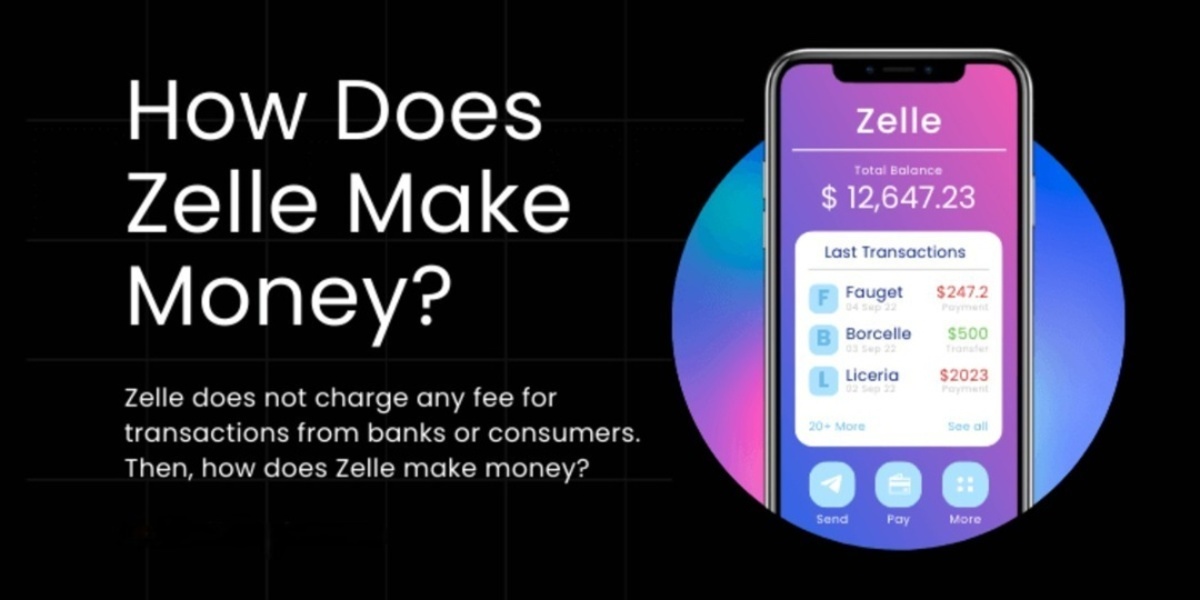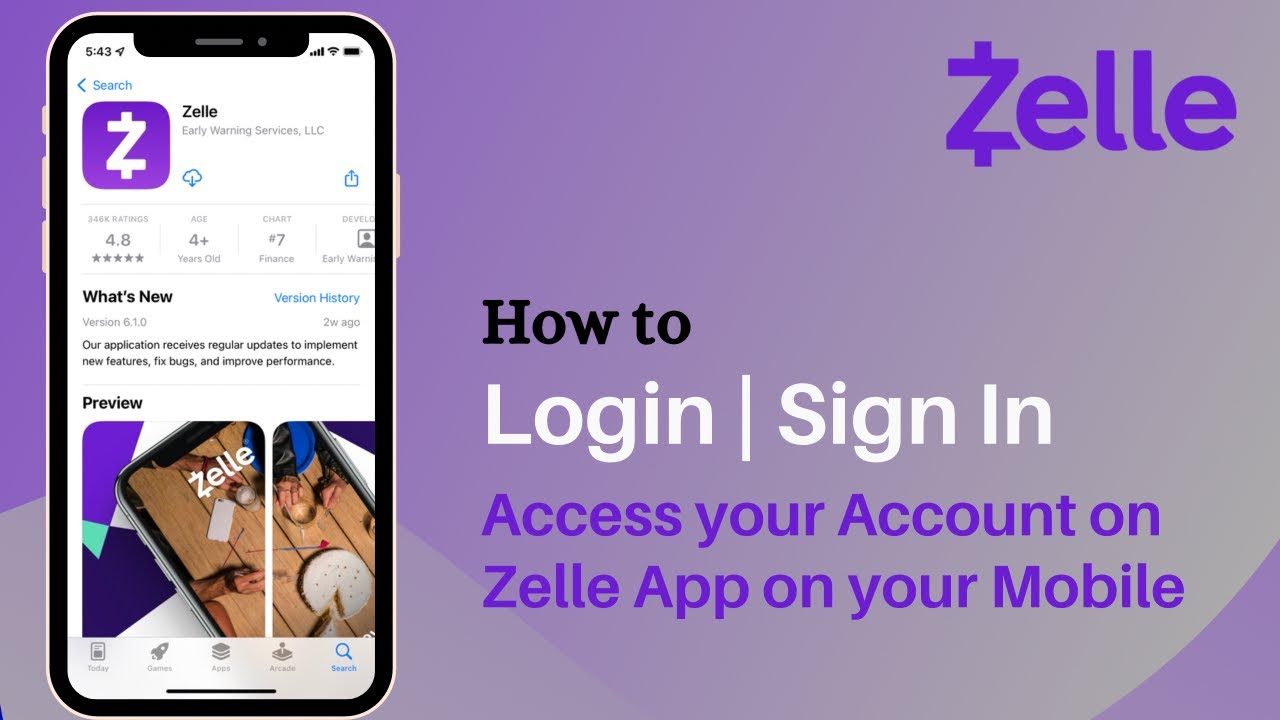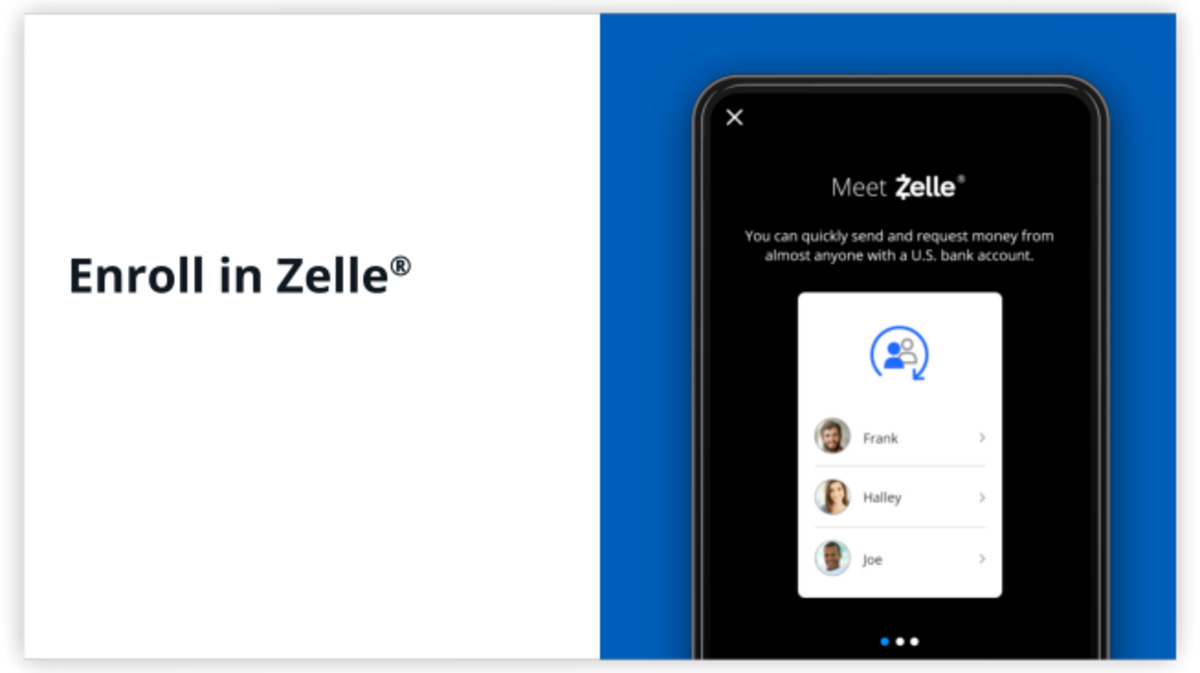Introduction
Introduced in 2011 as a money transfer service, Zelle has quickly gained popularity as a convenient and secure way to send and receive money. With the increasing adoption of mobile banking and digital payments, Zelle has emerged as a major player in the fast-growing peer-to-peer payment market. In this article, we will explore how Zelle makes money.
As an online platform that facilitates funds transfer between individuals, Zelle operates on a simple premise: enabling seamless and instant money transfers. By leveraging partnerships with major banks, Zelle has created a network that allows users to send money directly from their banking accounts.
Unlike other payment platforms that rely on transaction fees or advertising revenue, Zelle takes a different approach to monetization. By focusing on providing a reliable and user-friendly platform, Zelle aims to attract more users, thereby increasing its potential for revenue generation.
Let’s delve into the various ways that Zelle generates income to sustain its operations and facilitate further expansion.
What is Zelle?
Zelle is a digital payment platform that enables individuals in the United States to send and receive money quickly and securely. It was developed as a joint venture by several major banks, including Bank of America, Wells Fargo, and JPMorgan Chase. With the rise of mobile banking and the increasing preference for digital transactions, Zelle has emerged as a prominent player in the peer-to-peer payment market.
One of the key advantages of Zelle is its integration with existing bank accounts, making it seamless for users to send money directly from their bank accounts without the need for third-party apps or additional sign-ups. This integration also ensures that transfers made through Zelle are safe and protected by the banking industry’s robust security measures.
Zelle operates through a network of partnering financial institutions, allowing users to send money to anyone with a bank account in the United States. Whether it’s splitting a bill, paying rent, or sending money to a family member, Zelle offers a convenient and efficient way to transfer funds. Transactions are typically processed within minutes, providing users with near-instantaneous access to their transferred funds.
To use Zelle, individuals can either access the service through their participating bank’s mobile or online banking app or directly through the standalone Zelle mobile app. When sending money, users only need to provide the recipient’s email address or mobile number, eliminating the need for sharing sensitive banking information.
Zelle’s user-friendly interface and intuitive design have contributed to its growing popularity, attracting millions of users across the United States. It has become a desirable payment solution for friends and family members, roommates, small businesses, and even non-profit organizations.
In summary, Zelle provides a convenient and secure way for individuals and businesses to transfer money quickly and efficiently. With its strong network of partnering banks and a user-friendly platform, Zelle has established itself as a top contender in the peer-to-peer payment market.
How Zelle Makes Money
Zelle follows a unique business model that sets it apart from traditional payment platforms. Unlike some other services that rely on transaction fees or advertising revenue, Zelle focuses on creating a seamless user experience and facilitating efficient money transfers. Let’s explore the various ways that Zelle generates revenue:
Partner Fees: Zelle charges partner banks a fee to participate in its network. By partnering with major financial institutions, Zelle gains access to a large customer base and taps into the existing infrastructure of these banks. The partner fees contribute to Zelle’s revenue stream and help sustain its operations and continuous development.
Transaction Volume: Zelle makes money by processing a high volume of transactions. While individual users can send money using Zelle for free, businesses that use Zelle for their financial operations may be charged transaction fees. Zelle benefits from the continuous growth of digital payment transactions, as each transaction contributes to its overall revenue.
Data Analytics: Zelle leverages the data it gathers from user transactions for analytics purposes. By analyzing patterns and trends in payment behavior, Zelle can provide valuable insights to its partnering banks and businesses. This data-driven analysis may be provided as a premium service, generating additional revenue for Zelle.
API Integration: Zelle offers APIs (Application Programming Interfaces) that allow businesses to seamlessly integrate Zelle’s payment capabilities into their own applications. By charging licensing or integration fees for the use of these APIs, Zelle generates revenue from businesses that seek to enhance their payment systems with Zelle’s functionality.
Partnerships and Cross-Promotions: Zelle also generates revenue through partnerships and cross-promotions with affiliated businesses. These partnerships enable Zelle to tap into new customer segments and expand its user base. Revenue may be generated through referral fees or revenue-sharing agreements with these partners.
International Expansion: While Zelle currently operates in the United States, there is potential for international expansion. As Zelle looks to expand its services to other countries, it may generate revenue through international partnerships, currency exchange services, and cross-border transaction fees.
In summary, Zelle generates revenue through partner fees, transaction volume, data analytics, API integration, partnerships, and potential international expansion. By focusing on providing a seamless user experience and facilitating efficient money transfers, Zelle continues to grow its user base while generating revenue to sustain its operations and fuel future innovations.
Transaction Fees
While individual users can send money using Zelle for free, transaction fees may be applicable to certain types of transactions, primarily those involving businesses. Zelle offers businesses the ability to integrate its payment platform into their operations, allowing them to accept payments from customers through Zelle.
By charging transaction fees on these business-related transactions, Zelle is able to generate revenue. The fees are typically a percentage of the transaction amount or a flat fee per transaction, depending on the specific agreement between Zelle and the participating businesses.
The transaction fees serve two purposes for Zelle. Firstly, they contribute to the overall revenue of the company. With a large number of transactions being processed through Zelle, even a small percentage fee can add up to a significant amount of revenue.
Secondly, transaction fees incentivize businesses to utilize Zelle as a payment option. By offering competitive transaction fees, Zelle encourages businesses to choose its platform over others, enhancing its market position and expanding its user base. This ultimately creates a win-win situation for both Zelle and the businesses, as Zelle gains more transaction volume and the businesses enjoy the convenience and efficiency of using Zelle for payments.
It’s important to note that Zelle’s transaction fees are not applicable to individual users who are sending money to friends or family members. Zelle’s focus on providing a free and seamless money transfer experience for individual users helps drive user adoption and positions the platform as an attractive option for person-to-person transactions.
In addition to transaction fees, Zelle may also benefit from transaction volume in terms of partnerships and revenue-sharing agreements. By partnering with businesses that utilize Zelle as a payment option, Zelle may receive a percentage of the transaction fees charged by these businesses.
In summary, while individual users can send money for free using Zelle, transaction fees are applicable to business-related transactions. By charging these fees, Zelle generates revenue and incentivizes businesses to choose its platform for accepting payments. This transaction fee model helps sustain Zelle’s operations and contributes to its overall growth and success.
Zelle for Business
Zelle offers a range of benefits for businesses, making it an attractive payment solution for both small and large enterprises. By integrating Zelle into their operations, businesses can streamline their payment processes, improve cash flow, and enhance customer convenience. Here’s an overview of how Zelle benefits businesses:
Efficient Payments: Zelle allows businesses to receive payments from customers conveniently and quickly. With near-instantaneous transfers, businesses can access funds faster and improve their cash flow. This alleviates the need for traditional payment methods, such as checks or manual bank transfers, which can be time-consuming and may result in delays.
Improved Customer Experience: By offering Zelle as a payment option, businesses can enhance the customer experience. Many consumers already use Zelle for person-to-person payments, so accepting Zelle allows them to utilize a familiar and trusted platform for their transactions with the business.
Reduced Transaction Costs: Compared to traditional payment methods like credit cards, Zelle transactions can be more cost-effective for businesses. With lower transaction fees, businesses can save on processing costs, especially for larger transactions. This cost savings can contribute to increased profitability.
Easy Integration: Zelle provides businesses with APIs (Application Programming Interfaces) that allow for seamless integration into their existing systems. Businesses can easily incorporate Zelle’s payment functionality into their website, mobile app, or point-of-sale systems, making it convenient for customers to choose Zelle as their preferred payment method.
Secure Transactions: Zelle utilizes industry-standard security measures to protect both businesses and customers. With encryption protocols and authentication processes, businesses can ensure that their payment transactions are safe and secure. This helps build trust and confidence among customers, further enhancing the business-customer relationship.
Better Reconciliation and Reporting: Zelle offers businesses detailed transaction records and reporting tools, making it easier to reconcile payments and track financial activity. Businesses can access real-time data on payments received, providing valuable insights for financial management, reporting, and analysis.
Zelle’s focus on providing a seamless and efficient payment experience extends to its offerings for businesses. By simplifying the payment process, reducing transaction costs, and enhancing customer satisfaction, Zelle proves to be a valuable tool for businesses across various industries.
Integrating Zelle into their operations can give businesses a competitive edge and help them adapt to changing consumer preferences for digital and mobile payments. With its user-friendly interface, robust security measures, and cost-effective payment solutions, Zelle offers businesses a reliable and efficient platform to receive payments and enhance their overall financial operations.
Zelle’s Partnerships and Integration
Zelle has established strategic partnerships with various financial institutions and businesses to expand its reach and integrate its payment platform into existing systems. These partnerships play a crucial role in driving user adoption and increasing transaction volume. Here’s a closer look at Zelle’s partnerships and integration:
Partner Banks: Zelle’s initial success can be attributed to its partnerships with major banks in the United States. Through these partnerships, Zelle gained access to a vast network of customers who are already using the banking apps and platforms of these partner banks. This integration allows users to conveniently access Zelle’s services without the need for separate sign-ups or additional installations.
Non-Bank Partnerships: In addition to traditional banks, Zelle has expanded its network through collaborations with non-bank institutions, such as credit unions, community banks, and digital banking platforms. These partnerships enable Zelle to reach a wider audience and provide its services to a broader range of users. The integration of Zelle into these non-bank platforms further enhances the convenience and accessibility of the service.
Business Integrations: Zelle has also partnered with businesses in various industries to integrate its payment functionalities into their systems. By offering APIs and developer tools, Zelle enables businesses to seamlessly incorporate Zelle into their websites, mobile apps, and point-of-sale systems. This integration allows customers to make payments to these businesses directly through Zelle, enhancing the overall customer experience and streamlining payment processes.
Payment Processors: Zelle has formed partnerships with payment processors to facilitate the seamless integration of Zelle into existing payment ecosystems. By working with payment processors, Zelle expands its reach beyond individual banks and businesses, enabling users to access and utilize Zelle’s services through a wide range of payment platforms and service providers. This collaboration ensures compatibility and interoperability across different payment systems.
E-commerce Platforms: Zelle has also been integrated into popular e-commerce platforms, providing users with the option to use Zelle for online purchases. By partnering with these platforms, Zelle extends its reach into the e-commerce sector and allows users to experience the convenience and security of Zelle when making online payments.
These partnerships and integrations play a vital role in Zelle’s growth strategy. By aligning with established financial institutions, non-bank partners, businesses, payment processors, and e-commerce platforms, Zelle is able to leverage existing infrastructure and customer bases to drive adoption and increase transaction volume.
Furthermore, these partnerships enable Zelle to offer a seamless and integrated payment experience to users across various industries and platforms. Whether it’s sending money to friends and family, paying a bill, or making a purchase online, Zelle’s partnerships and integrations ensure that users can access and utilize the service conveniently and securely.
Advertising and Promotions
To attract more users and increase brand recognition, Zelle engages in various advertising and promotional activities. These initiatives help drive user adoption and encourage individuals and businesses to choose Zelle as their preferred payment platform. Here’s a look at Zelle’s advertising and promotion strategies:
Online Advertising: Zelle invests in online advertising campaigns to reach a wide audience and create brand awareness. This includes display ads, sponsored content, and targeted social media advertising. By strategically placing ads on popular websites, search engines, and social media platforms, Zelle ensures that its brand message reaches potential users who are seeking convenient and secure payment solutions.
Mobile App Promotion: Zelle promotes its mobile app through app store optimization and featured placements. By optimizing the app’s visibility in app stores and securing featured placements, Zelle increases the app’s discoverability and attracts new users who are browsing for payment apps. This helps drive downloads and user engagement.
Partnership Marketing: Zelle partners with other businesses and financial institutions to leverage their marketing channels and reach a wider audience. Through co-marketing efforts, Zelle can tap into the existing customer base of these partners and promote its services. This includes joint marketing campaigns, referral programs, and cross-promotions that highlight the convenience and benefits of using Zelle for money transfers.
Incentive Programs: To encourage users to adopt Zelle as their primary payment method, Zelle offers incentive programs such as referral bonuses and cashback rewards. These promotions reward users for referring others to join Zelle or for engaging in specific transaction activities. By incentivizing users, Zelle drives user acquisition and encourages ongoing usage of its services.
Brand Collaborations: Zelle collaborates with popular brands and influencers to increase brand visibility and credibility. By partnering with well-known entities, Zelle can tap into their existing customer base and gain trust and recognition. These collaborations may involve joint marketing initiatives, sponsored content, or special offers to attract users to Zelle’s platform.
Public Relations: Zelle invests in public relations efforts to generate media coverage and enhance brand reputation. This includes issuing press releases, participating in industry events, and securing media interviews. By positioning Zelle as an innovative and reliable payment solution, these PR activities help build trust and credibility with users and industry stakeholders.
With these advertising and promotional efforts, Zelle aims to not only increase brand awareness and user adoption but also differentiate itself from competitors in the market. By highlighting the security, convenience, and user-friendly nature of its platform, Zelle aims to establish itself as a trusted and preferred payment solution for individuals and businesses.
In summary, through a combination of online advertising, mobile app promotion, partnership marketing, incentive programs, brand collaborations, and public relations, Zelle effectively promotes its services and attracts new users. These strategies contribute to Zelle’s continuous growth in the digital payment industry.
Expansion and International Revenue
While Zelle currently operates within the United States, there is potential for expansion into international markets. As digital payments continue to gain popularity worldwide, Zelle may explore opportunities to expand its reach and generate revenue beyond its domestic user base.
International expansion can present significant growth opportunities for Zelle. By entering new markets, Zelle can tap into a broader customer base, encompassing individuals and businesses across different countries and regions. This expansion can be achieved through various strategies:
Partnerships with Foreign Banks: Zelle can establish partnerships with financial institutions outside the United States. By leveraging the existing infrastructure and customer base of these banks, Zelle can quickly enter new markets and offer its payment services on a global scale. These partnerships can provide valuable insights and guidance regarding local regulatory requirements and market dynamics.
Currency Exchange Services: As part of its international expansion, Zelle can explore opportunities to offer currency exchange services. By enabling users to convert funds between different currencies, Zelle can provide added convenience and unlock new revenue streams through currency exchange fees or spreads.
International Money Transfer Fees: Zelle can potentially generate revenue by charging fees on international money transfers. As users send money across borders, Zelle can apply transaction fees or foreign exchange fees, similar to other international money transfer services. These fees can contribute to Zelle’s overall revenue and profitability.
Expansion into Digital Marketplaces: Zelle can explore partnerships with international e-commerce platforms and digital marketplaces. By integrating Zelle’s payment functionalities into these platforms, Zelle can offer users a seamless and convenient payment option for online purchases. Through revenue-sharing agreements or transaction fees, Zelle can generate income from these international digital transactions.
Advertising and Localization: To expand internationally, Zelle will need to invest in international marketing efforts to promote its brand and services in new markets. This includes targeted advertising campaigns that cater to the preferences and needs of specific regions, as well as adapting the user interface and customer experience to the local language and cultural contexts.
Entering new markets and expanding internationally may present unique challenges, including regulatory compliance, cultural differences, and competition from established players in each market. However, with the increasing global demand for digital payment solutions, Zelle has the potential to overcome these challenges and establish a strong international presence.
Overall, through strategic partnerships, currency exchange services, international money transfer fees, expansion into digital marketplaces, and localized advertising efforts, Zelle can generate international revenue while expanding its user base beyond the borders of the United States.
Conclusion
Zelle has emerged as a leading player in the peer-to-peer payment market, offering individuals and businesses a convenient and secure way to send and receive money. Through its unique business model, Zelle generates revenue while providing a seamless user experience and facilitating efficient money transfers.
By partnering with major banks and non-bank institutions, Zelle has built a robust network that allows users to send money directly from their existing bank accounts. This integration ensures convenience and security for users, setting Zelle apart from traditional payment platforms.
Zelle generates revenue through transaction fees on business-related transactions, benefiting from the high volume of transactions being processed through its platform. In addition, Zelle leverages data analytics, APIs, and partnerships to further drive revenue and expand its user base.
Through advertising and promotional strategies, Zelle raises brand awareness, attracts new users, and differentiates itself in the market. By offering incentives, facilitating integrations, and collaborating with businesses and influencers, Zelle enhances its position as a preferred payment solution.
While Zelle currently operates within the United States, opportunities for international expansion exist. By forming partnerships, exploring currency exchange services, and entering digital marketplaces, Zelle can tap into global markets and generate international revenue.
In conclusion, Zelle’s success stems from its focus on user experience, integration with existing banking systems, strategic partnerships, and innovative revenue generation methods. With its commitment to convenience, security, and seamless transactions, Zelle continues to grow its user base and solidify its position as a trusted and preferred peer-to-peer payment platform.

























